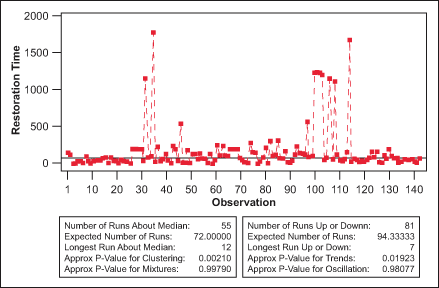
Information technology (IT) services are highly valued in today’s enterprise particularly those aligned with business needs. As IT departments transition from technology to service based management, more organizations are following the Information Technology Infrastructure Library (ITIL) framework. ITIL is a set of best practices intended to facilitate the delivery of high quality IT services. ITIL processes aim at achieving high financial quality and value in IT operations. These procedures are supplier-independent and have been developed to provide guidance across the breadth of IT infrastructure, development and operations. ITIL is the most widely accepted approach to IT service management today.
The Six Sigma methodology is customer oriented, data driven and fact based. It also follows a well-defined roadmap and tool set. Organizations pick the individual components that make the most sense for their focus area. In such an approach the “what” part is followed as per the ITIL framework, however, the “how” component in the process often remains a gray area. Leveraging Six Sigma paves the way to overcome such a situation.
IT Process Improvement Program – Focus Area
Consider a technology division of a major insurance player in Europe. The organization went through a major phase of the ITIL based process definition initiative, metric definitions, tool deployment and training programs. Two quarters after the rollout, however, the process performance results were not meeting the desired results. Six Sigma was used to carry out a diagnostics study for the IT support processes.
The organization used a customized version of the DMAIC life cycle starting with the voice of the customer (VOC) gathered through interviews and focus sessions with the stakeholders. The VOC indicated there were improvement opportunities for the teams regarding tools and process adherence. The VOC analysis also indicated routing delays and incidents of closure. Further errors concerning documentation of cause codes and severity assignments were also observed.
The existing process data analysis indicated consistency with incident volumes; however, the variation in cycle time was found to be too high indicating special causes affecting the process.
The life cycle of a diagnostic study includes the following steps:
- Identify key stakeholders
- Identify process handoffs
- Validate project CTQs (critical to quality)
- Collect data
- Baseline process performance
- Perform causal analysis and failure mode and effects analysis
- Identify variation sources
- Prioritize improvement opportunities
- Implement process control plan




In these steps, using the inputs from the VOC, the process was analyzed using failure mode and effects analysis (FMEA). The availability of detailed process maps helped identify all possible failure modes. During the VOC sessions one of the common themes that emerged was the usage of a new tool – FMEA was used to gather maximum inputs of potential causes and control mechanisms were put in place by respective teams. FMEA revealed approximately 60 causes in 25 steps of the process. The majority of them impacted cycle time, as illustrated in Figure 5.

The process definition work carried out earlier facilitated Six Sigma methodology as a catalyst in the whole process diagnosis. The process breakpoints and the causes were delineated using FMEA, and 40 improvement opportunities with a potential savings of $6 million were identified within a very shot time span.
Capitalize on the Synergy
This case study shows the need for capitalizing the synergy between the two widely used models in process improvement – ITIL and Six Sigma. ITIL prescribes the workflow for key processes in IT service management. These workflows are analyzed as processes in a Six Sigma initiative. When implementing process improvement initiatives, the new processes are derived from the various findings of analysis for the past process. Deployment of the new process with necessary knowledge transfers is another common area in both the models. In both initiatives the key goal is customer satisfaction.

Conclusion
Embedding Six Sigma principles while developing an ITIL deployment plan is a major success enabler. The deployment of any model around the existing processes in an organization is a conscious decision. Considering the costs associated with initiatives the key benefit the business looks for is the return on investment in the deployment costs. There are a variety of models. Each one has its inherent strengths – strong in processes, good IT controls, better metrics or organizational practices. And each one may be weak in one or more areas – security, people or a model that does not delineate the “how” of implementation. With the variety of options available, a business should look for a standard integration effort when selecting a model. ITIL and Six Sigma is one such combination.